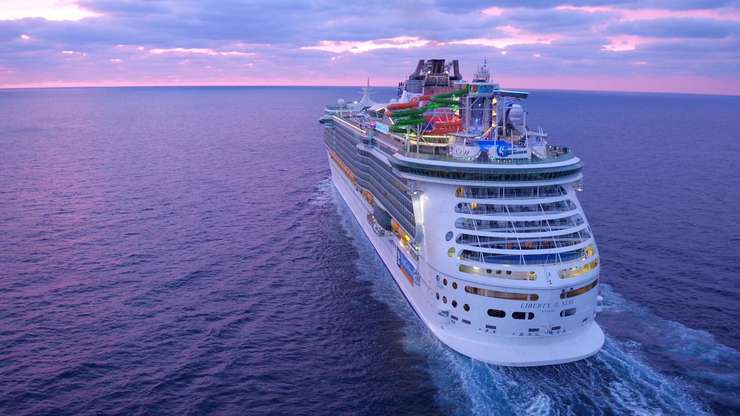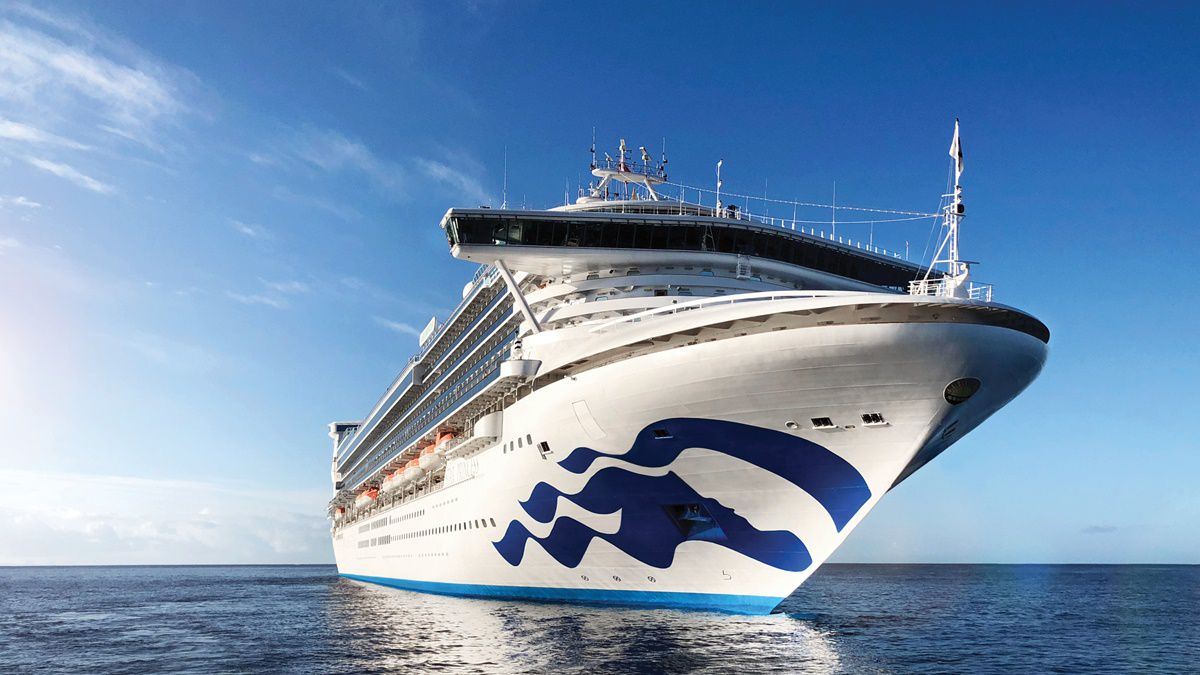Table Of Content

Sometimes speed is important, like when you’re running late for work or need to get to the store before it closes. Other times, such as when you’re on a cruise, speed is something you want to avoid, or at least, not think about. Luckily, for travelers who love to see the world by ship, a cruising vessel has to go slower than what we’re used to with cars or planes. Otherwise, a cruise ship would burn too much fuel and zip past gorgeous scenery. Of course, enormous cruise ships can’t run without substantial fuel supply. Larger cruise ships can use up to 250 tons of fuel per day and burn a gallon of fuel every 30 to 60 feet traveled — that’s over 80,000 gallons of gasoline a day.
Top 5 Cruise Lines by Number of Total Berths: Now and Into the Future
These pods can rotate a full 360 degrees, providing exceptional maneuverability for the ship. Another advantage of diesel-electric propulsion is the flexibility it offers in terms of power distribution. The electricity generated can be distributed to various onboard systems and devices, such as lighting, air conditioning, and entertainment systems. This allows for efficient power management and ensures that the ship operates smoothly and efficiently. Additionally, the availability of electricity throughout the ship eliminates the need for additional power sources, making the ship more self-sufficient. Passengers may also note that boats slow in shallow water such as that found close to harbors.
Diesel-Electric Propulsion
Captains may choose to reduce speed for safety reasons, ensuring a smooth and comfortable journey for passengers. Today’s cruise ships are capable of far faster speeds, thanks to huge advancements in technology. As a result, an average large cruise ship travels at cruising speeds greater than the maximum speed of a historical wooden vessel. Well, if we stick to the average cruising speed of about 20 knots, which is roughly equivalent to 23 miles per hour, cruise ships go about 550 nautical miles in 24 hours.
How Fast Do Sailing Boats Go?
These screws need a lot of torque, instead of a lot of high-speed to operate. Ideally, every cruise experience would be nothing but smooth sailing. In the real world, however, ships are at the mercy of Mother Nature. By the 17th century, the practice evolved to include a length of rope with knots tied at regular intervals. Sailors would toss the rope into the water and count the number of knots that drifted past the ship’s stern in a given amount of time. Cruising speed also improves fuel efficiency, the same way a certain speed improves fuel efficiency for your car.
By understanding the water flow around the propellers, engineers can design propeller blades that maximize thrust efficiency. Hydrodynamic considerations also help determine the optimal positioning and number of propellers to ensure efficient propulsion and maneuverability. The interaction between the propellers and the water is carefully studied to minimize cavitation and noise, further enhancing propulsion system performance. During the docking and undocking process, tugboat assistance is particularly critical. Tugboats assist in aligning the cruise ship with the berth or pier accurately.
Like the vehicles we drive, cruise ships come in a variety of sizes. Generally speaking, the force needed to accelerate any vehicle—be it a car or a boat—increases with its weight. The number of passengers onboard a cruise ship can also affect its speed. Ships with a higher passenger capacity may have to travel at a more moderate speed to ensure the comfort and safety of everyone on board. So while the thought of sailing on the fastest cruise ship in the world may be exciting, cruising is more about relaxation, leisure, and exploration. Whether you’re enjoying the amenities on board or exploring the ports of call, it’s the journey itself that makes cruising such a memorable experience.
By optimizing hull shape, appendage placement, and propulsion system design, engineers can enhance fuel efficiency, stability, maneuverability, and passenger comfort. The study of hydrodynamics also contributes to making cruise ships more sustainable, reducing their environmental impact on the waterways they traverse. In summary, gas turbine propulsion systems provide cruise ships with impressive power and maneuverability.
Let’s delve deeper into how pod propulsion works and the benefits it brings to the world of cruising. Another propulsion system found in some cruise ships is gas turbine propulsion. Gas turbines generate power by combusting fuel and using the high-pressure hot gas to drive the turbines. Just like a car on the highway, higher speeds for ships create aerodynamic drag.
How Do Cruise Ships Float When They're So Heavy? Trusted Since 1922 - Reader's Digest
How Do Cruise Ships Float When They're So Heavy? Trusted Since 1922.
Posted: Fri, 28 Apr 2023 07:00:00 GMT [source]
Going faster can lead to a bumpy ride as faster speeds pull more of the hull out of the water. Since giving passengers a comfortable ride is vital, it’s unlikely that a captain would increase the speed unnecessarily. Improvements are being made to allow ships to sail faster without consuming as much fuel. For the most part, cruise ships would rarely sail at their maximum speed other than during sea trials. During a ship’s sea trials, the captain will usually test the ship’s maximum speed to ensure the ship meets performance specifications.

These factors contribute to a cleaner and more sustainable cruising experience, aligning with the industry’s commitment to reducing environmental impact. Gas turbine propulsion systems offer quick response times, enabling rapid acceleration and deceleration. This is particularly advantageous when navigating through congested waterways or performing emergency maneuvers.
On the other hand, a headwind pushing against the bow or front of the boat can significantly slow it down, requiring more energy to travel at the same speed. Wind shear from wind hitting the boat from either side creates drag and makes it harder for the boat to move forward, consuming more fuel than a calm sea or one with a lucky tailwind. The cruise itinerary and the distance between ports of call also play a significant role in determining the speed of a cruise ship. Cruise ships are designed to reach each port on time, ensuring a seamless and punctual experience for passengers. Therefore, ships often adjust their cruising speed based on the distance they need to cover and the specific time constraints of the itinerary. The size of a cruise ship plays a significant role in determining its speed.
The most common method was known as the “Dutchman’s Log.” Sailors would throw a piece of wood (or another floatable object) overboard. Then they would count how much time passed before the object passed the stern. Our goal has been to provide our readers with expansive coverage of all aspects of the Royal Caribbean experience.
Sometimes, another vessel requires assistance, and the crew prepares the boat for top speed to answer the SOS. In case of an outbreak of illness or disease on board, ships sometimes must anchor offshore or cruise around until they are cleared to enter their port of call. Assuming a cruise ship is optimally designed for weight load, its speed will be the square root of its horsepower divided by weight. However, operators who want to improve their speed cannot just offload some weight and expect to achieve maximum speed. For example, front-loading the boat creates drag and slows it down.
Additionally, the weather and ocean conditions can also impact how fast your cruise ship is sailing. If there’s a storm in the area, the captain might choose to sail faster or slower than a normal pace to ensure smooth sailings. Wind speed and direction play a major role in cruise ship speed as well. If the ship is sailing into a headwind, it needs to use more fuel and engine power to maintain speed.


No comments:
Post a Comment